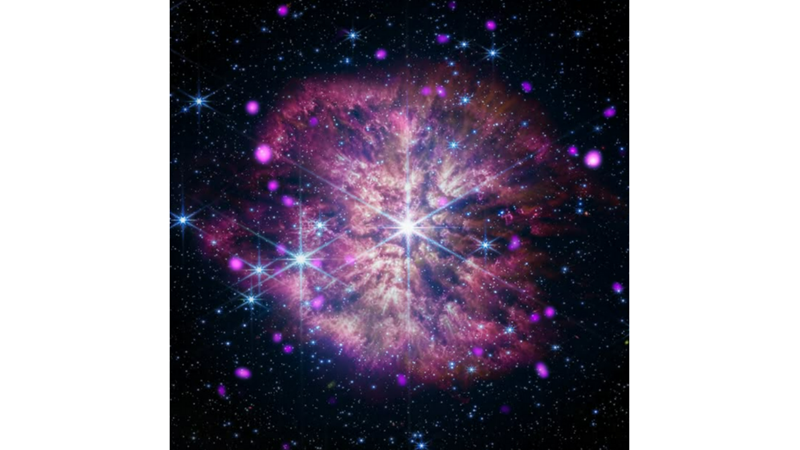Sometimes you have to bloom before you can shine, like the spectacular phase of a rare Wolf-Rayet star before it goes supernova. Located 15,000 light-years from Earth in the constellation Sagittarius, WR 124 shed its outer layers to form a flower-like halo of gas and dust, reminiscent of the short life only certain stars live before exploding.
In this image, which combines data from NASA Chandra Xray, NASA Webb and WISE telescopes, WR 124 dazzles with dozens of bright stars around it. In the image, Chandra's X-rays are represented in purple and WISE's infrared observations in blue. Observations from the Webb telescope's Near and Mid-Infrared instruments are blended in red, green and blue.
This star has 30 times the mass of our Sun and has already emitted about 10 solar masses of matter. As the gas recedes and cools, cosmic dust begins to form. This process offers astronomers important clues to the early history of our universe.
In the young universe, stars like WR 124 enriched their environment with heavy elements produced in their cores. Today, these heavy elements are common in the current structure of the universe, including Earth.
Image description:
A large eight-pointed star shines white and blue in the center of the image. Yellow dust clouds surround the star near the center and purple dust clouds surround the outer parts. Together, the star and the dust resemble a blooming flower. It is surrounded by purple spots and other blue eight-pointed stars. The black background of space where the star sits is bright with other stars.


 Nielawore
Nielawore









Yorumlar
nice
Yorum yazmak için lütfen giriş yapınız